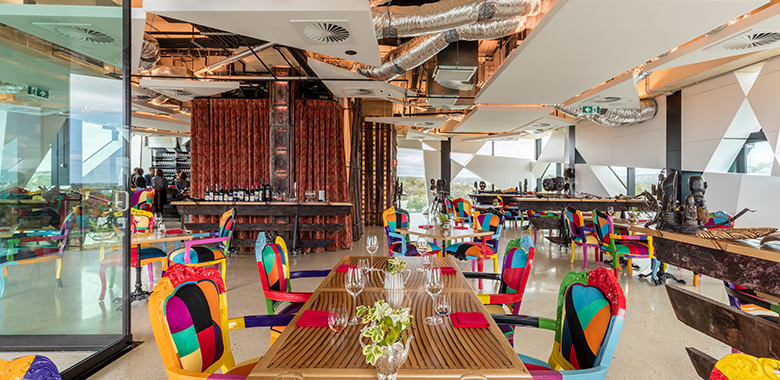
Life
Spotlight on: d’Arenberg
It’s impossible to overstate the significance of McLaren Vale in the story of Australian wine. One of the country’s original wine-producing regions, the potential of its Mediterranean-style climate, variety of fertile soil types and proximity to the cooling breezes of the sea were recognised by wine pioneers as early as 1838 – a mere two years after the colony of South Australia was founded.
Since 1912, the family behind d’Arenberg have displayed a similarly innovative spirit to those early trailblazers, when founder Joseph Osborn sold his stable of prize-winning race horses to purchase a property in McLaren Vale then known as Bundarra, where he could work the land and plant a vineyard. Initially selling its fruit to other winemakers, by 1927 he and his son Frank had decided to build a winery of their own – one that would eventually become one of the best-recognised in the country.
“WINE IS LIFE”
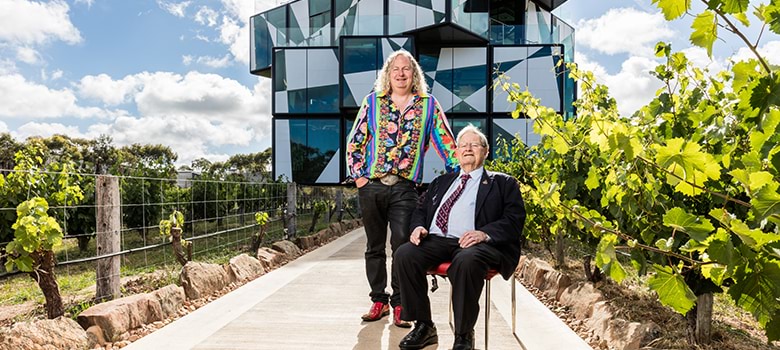
The d’Arenberg label, however, came some time later. Frank’s son d’Arry, having joined the family business in 1943, assumed management of the winery in 1957 and within two years had launched d’Arenberg as a label in its own right. Named for his mother, Helena d’Arenberg, the distinctive red stripe that began gracing its wines was a callback to d’Arry’s days at Prince Alfred College. This was also the birth of the d’Arenberg crest, featuring the Latin motto Vinum vita est – Wine is Life.
d’Arry’s son Chester has continued the family passion into the fourth-generation. Having grown up helping his father in the vineyards and the cellar, in 1984 he assumed the role of Chief Winemaker, reinstating traditional winemaking methods of foot-treading and basket pressing. “All my wines, including the whites, are basket-pressed,” Chester told Selector magazine. “The reds are traditionally fermented in open wax-lined concrete fermenters and stainless steel replicas.”
Chester’s efforts ushered in a new era of acclaim for the resulting wines, successfully building on the family legacy and helping to introduce d’Arenberg to new audiences of wine lovers here and overseas.
ORGANIC SUCCESS
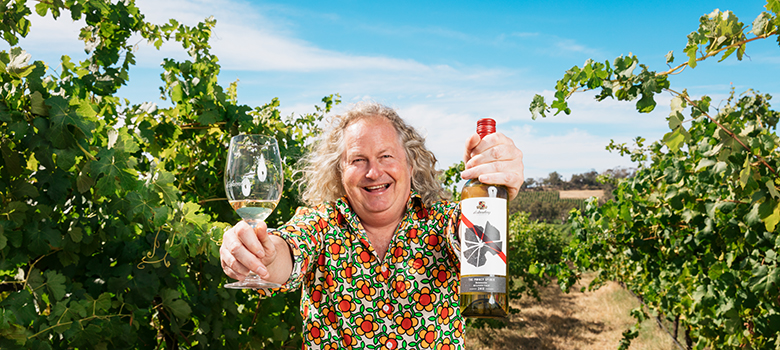
The d’Arenberg approach is one of minimal intervention across every vineyard that is owned, leased or contracted by the family, which are NASAA certified for organic and biodynamic processes. The idea is to encourage strong root systems that can penetrate multiple levels of soil, which are ultimately reflected in lively tannin structures, soil characters and fine minerality. This also has the effect of keeping yields low, helping concentrate flavours and providing an excellent resulting acidity.
Additionally, solar and a photovoltaic generator, 100% recycling of onsite wastewater and affiliation with various eco-conscious endeavours – including Entwine – form d’Arenberg’s strongly environmentally-focussed approach to winemaking, seen by the family as a custodial arrangement to ensure a sustainable business can be passed along to the next generation.
FROM THE VINE TO SUBLIME
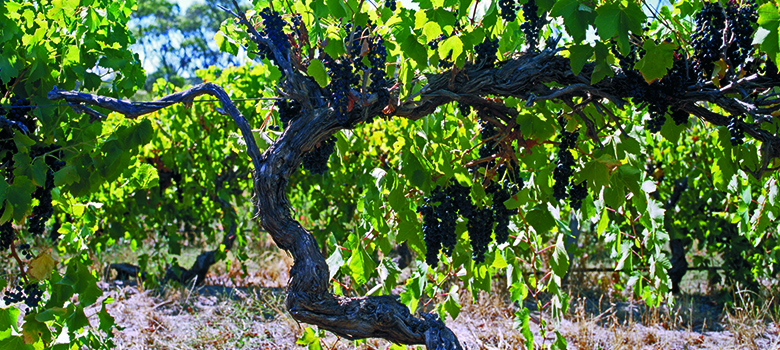
With over 70 wines across 30 different grape varieties, d’Arenberg produces wines from the entry level to the iconic, and are particularly celebrated for their Grenache. “We are lucky to have some of the oldest Grenache in McLaren Vale,” Chester told Wine Selectors earlier this year. Nonetheless, he says, “each of our wines are like my babies, and different wines suit different occasions.”
Down at the vineyard level, Chester walks the rows tasting the grapes, to determine the ideal time for picking. Small batches are crushed in a gentle, rubber toothed crusher before being transferred for fermenting, where they remain separate until blending. For reds, foot treading is undertaken two-thirds of the way through fermentation, and when the tannin extraction is deemed just right the wine is basket pressed and transferred to a mixture of new and old French and old American barriques or large casks to complete their fermentation.
Extensive barrel tasting is undertaken by Chester and his team to determine the final blend. It is a rigorous process, but one that regularly results in highly celebrated award winners like the d’Arry Original Shiraz Grenache 2015, The Dead Arm Shiraz 2009, The Dry Dam Riesling 2017, The Laughing Magpie Shiraz Viognier 2014 and key The Derelict Vineyard Grenache vintages.
THE ART OF BEING DIFFERENT
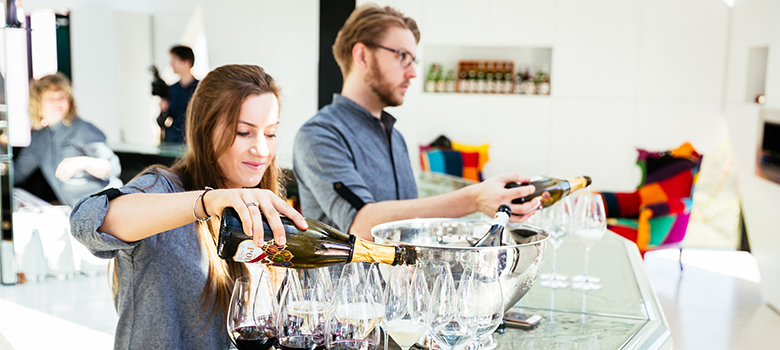
It is impossible to write of d’Arenberg without making mention of the already-iconic d’Arenberg Cube. Constructed at a cost of over $15m, it’s a bold addition to the McLaren Vale landscape, and was awarded the Good Design Award 2018 – one of the country’s highest honours for architectural design.
Akin to an oversized Rubik’s cube, the facility has not only increased visitor numbers to the winery, but to the greater region also. Across its five levels it houses a wine sensory room, a virtual fermenter, a 360o video room, and the Alternative Realities Museum, which is presently home to the Dali at d’Arenberg exhibition, presenting the work of the Surrealist master Salvador Dali to mark the 30th anniversary of his death. The exhibition runs until May 2020, and showcases some of Dali’s most iconic imagery, alongside works by Australian Surrealist Charles Billich.
DINING AT d’ARENBERG
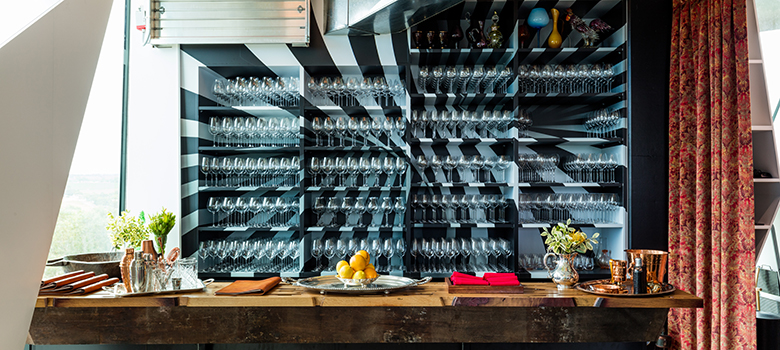
Situated on the d’Arenberg Cube’s fourth floor, the d’Arenberg Cube Restaurant is a luxury dining experience that aims to challenge dining conventions – beginning with the absence of a menu. Instead, husband-and-wife team Brendan Wessels and Lindsay Dürr draw upon their training and eclectic global experience to focus purely on extracting the best possible flavours from the products at hand for their seasonally-changing degustation menu. Surprise is a crucial aspect of the experience, and different levels of wine-matching are also available from an extensive list of over 550 wines, including museum releases from d’Arenberg vintages.
Alternatively, visitors can experience the fresh seasonal offerings of the region at d’Arry’s Verandah, or take in a relaxed lounge vibe with bespoke platters at Polly’s Wine Lounge, both part of the winery’s restored 19th century homestead. Truly, visitors to d’Arenberg are spoilt for choice when it comes to their dining options with special theme-based dining experiences such as Chef’s Table, varietal masterclasses, wine and cheese tasting flights and more to discover.
d’ARENBERG DECADENCE
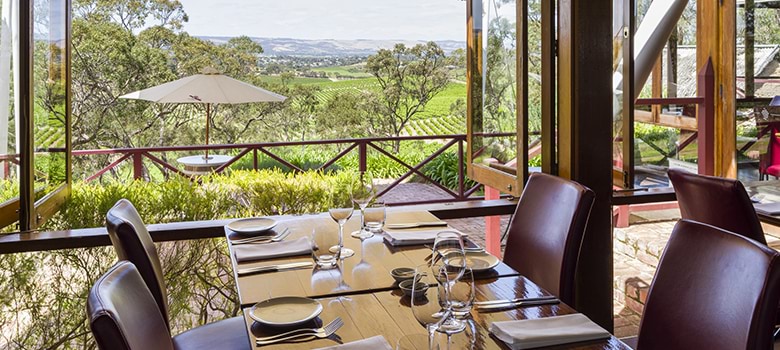
For a truly immersive take on the d’Arenberg Experience, it’s hard to go past the Day of Decadence. It all begins with a tour of the various art installations the d’Arenberg Cube is home to, followed by a tour of the original cellar, built in 1927, where you’ll learn first-hand about the family’s history as you taste wine straight from the barrel. Then, you’ll be taken to the d’Arenberg Cube Restaurant, for a luxurious degustation experience.
For those after something more exclusive still, try the Helicopter Tour or Scenic Flight, taking in the views of the vineyards and surrounding coastlines of McLaren Vale from the cockpit of a private helicopter or 1930s bi-plane, before landing to blend your own bottle and take in an eight-course degustation menu at d’Arry’s Verandah Restaurant.
Who said it pays to play it safe? Not d’Arenberg. And nor will you, after spending a day at this utterly unique and iconic fixture on the Australian winemaking landscape.
d’Arenberg is located on Osborn Road, McLaren Vale South Australia. For more information, visit their website, or explore more wines from this great region with Wine Selectors.